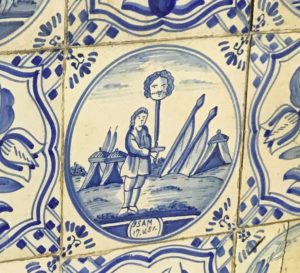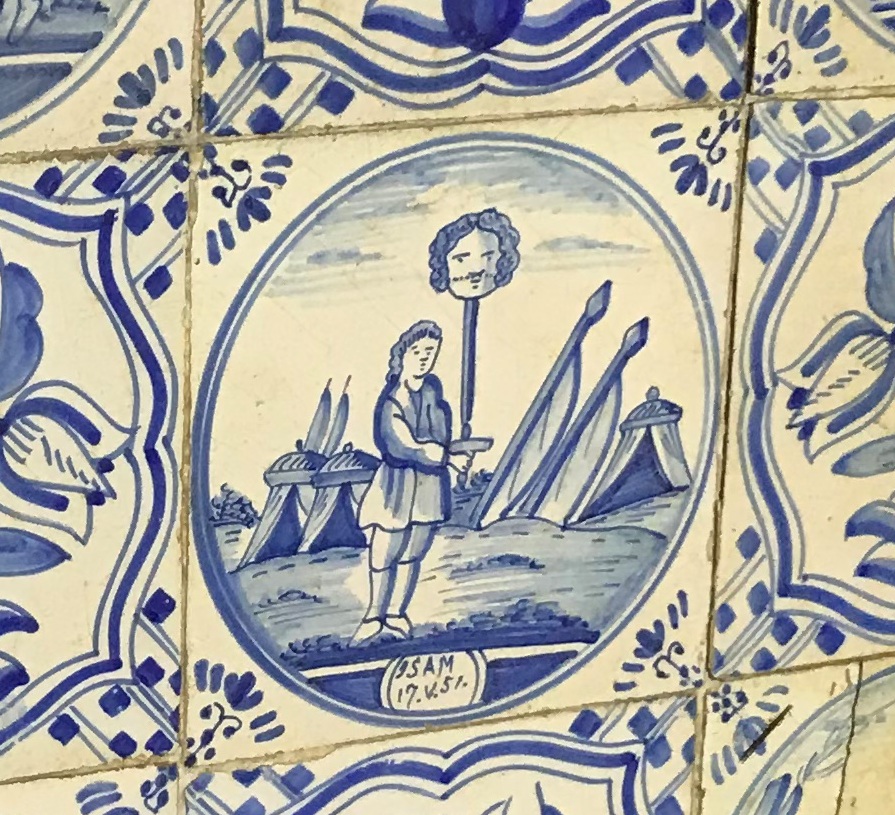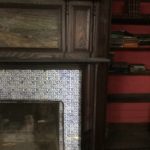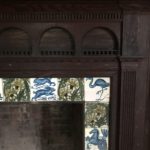[vc_row][vc_column][vc_column_text]There are many unique features about the Plummer House on Hawthorn Street. One of them is the beautiful Dutch tile that borders three of its fireplaces. The distinctive blue and white tile was the most popular export during the Golden Age of Dutch Commerce. It began in the early 1600’s, when the Dutch East India Company captured two Portuguese ships carrying a large amount of Chinese blue and white porcelain, which was sold at auction. This sale and the Netherland’s continued trade in Southeast Asia created tremendous interest in blue and white pottery. Consequently Dutch craftsmen started to emulate that style, which is often referred to as Deftware due to the large manufacturing hub in the city of Delft.
The blue and white tiles were used in many different ways, including the decoration of hearths, walls and baseboards. They provided an easy to clean surface, fire protection, a colorful accent to interiors and a way to educate children through natural, cultural and biblical scenes. As in Europe, Dutch settlers in North America used Delftware tile to decorate their hearths and walls and by the 1750’s advertisements for Dutch tile increased in the colonies. Massachusetts actually has the most examples of original in-situ Deftware tiles in North America. Many of these homes with original Dutch tile have been turned into museums.
Another interesting element to the Plummer House tiles are the biblical tiles used on the fireplace in the dining room. Biblical tiles were the most expensive offering in the tile works, often four times as expensive as tiles showing pastoral scenes or landscapes. This is because they were usually made by the most talented artisan in the workshop, due to the artistic skill required to depict complex human figures, buildings, animals and tiny inscriptions related to Scripture verses. Tile artists usually chose scenes from the Old Testament gather than the Gospels because they had stronger narrative potential. For example this tile depicting Samuel chapter 17, verse 51 which states: Therefore David ran, and stood upon the Philistine, and took his sword, and drew it out of the sheath thereof, and slew him, and cut off his head therewith. And when the Philistines saw their champion was dead, they fled.

Delftware tiles stayed popular till the 1820’s when European tile manufacturers began going out of business due to the introduction of machine-produced wallpaper and stucco as cheaper alternatives for wall decorations. The 1870’s saw a brief resurgence when working class Americans attempted to recreate wealthy Dutch dining rooms. As of yet, we do not know the provenance or age of the Dutch tiles found in the Plummer House, which was built in 1857 after most of manufacturers shut down in the 1820’s. Are the Plummer House tiles from before the 1820’s? Or were they added to the hearths in the 1870’s when Dutch tile saw a brief resurgence? There are no surviving photos of the interior of the house from the late 1800’s to shed light on this question. We will continue to look for receipts or correspondence regarding this interesting feature of the house.
WHALE would like to thank guest blogger Erin Burke for researching and writing this piece! If you’d like to see more of Erin’s work with historic interiors and restoration, visit her blog at www.whalingcitycottage.com.
[/vc_column_text][/vc_column][/vc_row]


































